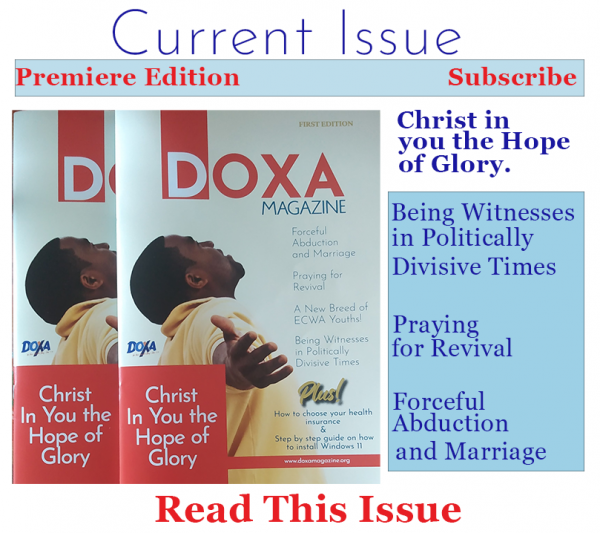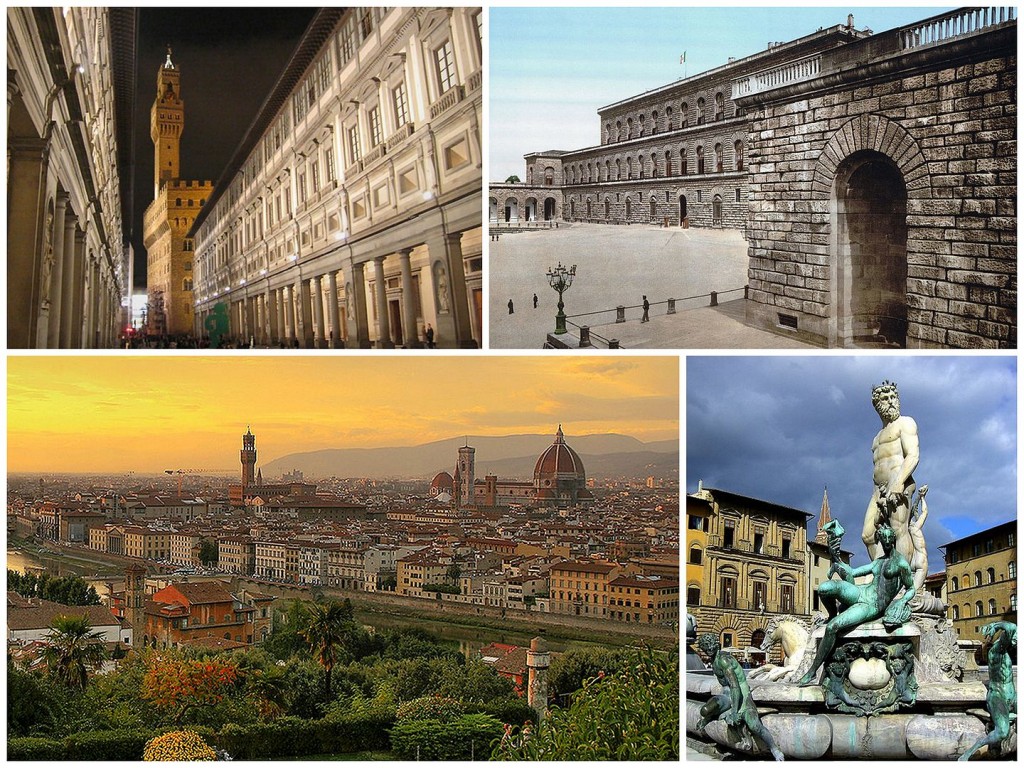
Florence originated as a Roman city, and later, after a long period as a flourishing trading and banking medieval commune, it was the birthplace of the Italian Renaissance. Florence lies in a basin formed by the hills of Careggi, Fiesole, Settignano, Arcetri, Poggio Imperiale and Bellosguardo (Florence). The Arno river, three other minor rivers (Mugnone, Ema and Greve) and some streams flow through it.

Florence is the most populous city in Tuscany, with a population of 383,084 in 2013, and over 1,520,000 in its metropolitan area. The Tuscan capital is the birthplace of Renaissance and sometimes called “the Athens of the Middle Ages.” Florence is the home of cultural giants like Dante, Giotto, Leonardo, Michelangelo, Machiavelli, and Galileo. Founded as a Roman military colony in 59 BC, Florence became a European financial power in the early Middle Ages, and under the leadership of the Medici family in the 1400s, left the world an incomparable artistic legacy. Works of art in themselves, the churches, palaces, and museums of Florence today hold one of the world’s greatest concentrations of art masterpieces.
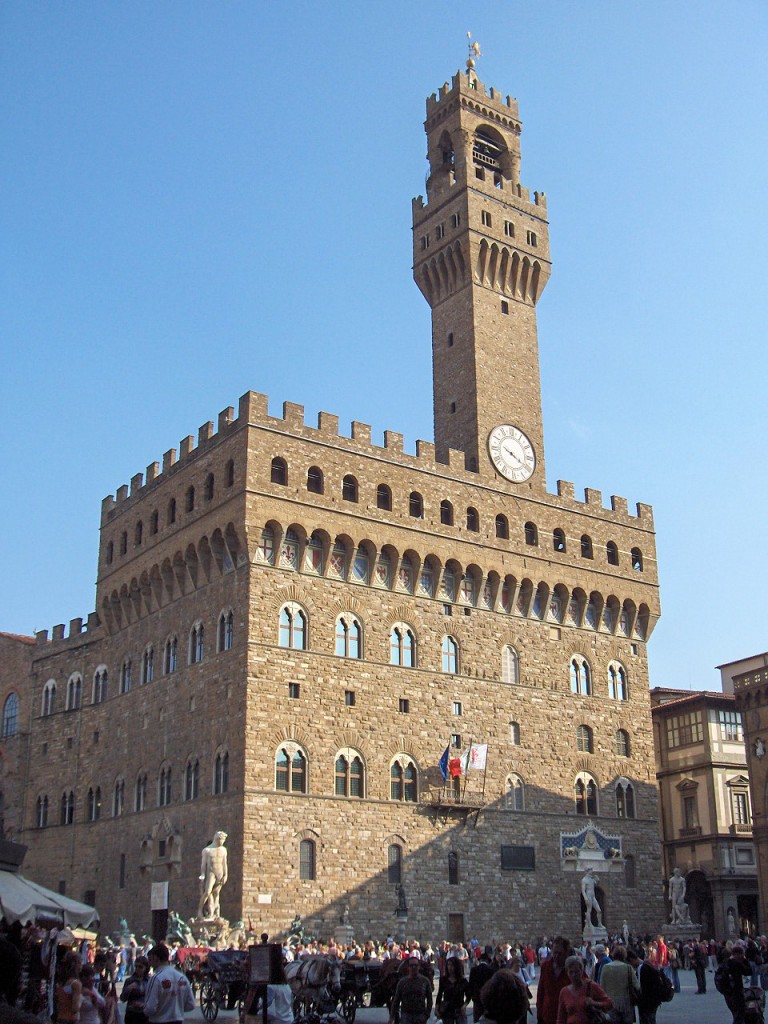
Florence plays an important role in Italian fashion, and is ranked in the top 15 fashion capitals of the world and is a major national economic center, as well as a tourist and industrial hub. As the birthplace of the Gucci, Pucci, Roberto Cavalli, and Ferragamo fashion houses; Florence is a shopper’s paradise, and with the fields and vineyards of Tuscany at its doorstep, the city’s culinary pleasures ranged top in the world as well. Florentine food grows out of a tradition of peasant eating rather than rarefied high cooking. The majority of dishes are based on meat.
Timeline of Events
- 59 ac On the site of a former Etruscan trading colony at an Arno River fording spot in central Italy, the Romans establish a garrison town, Florentia, today’s Florence.
- 5th-8th century. AD After the Western Roman Empire’s fall in 476, Ostrogoths and Byzantines vie for control of Florence. Lombards rule from 570; Charlemagne takes the city in 77 4.
- 12th-13th century. Florence becomes a comune (city-state) within the Holy Roman Empire in 1115. The city grows rich as a banking and textile center, but is racked by strife between pro-papal Guelph and pro-imperial Ghibelline factions.
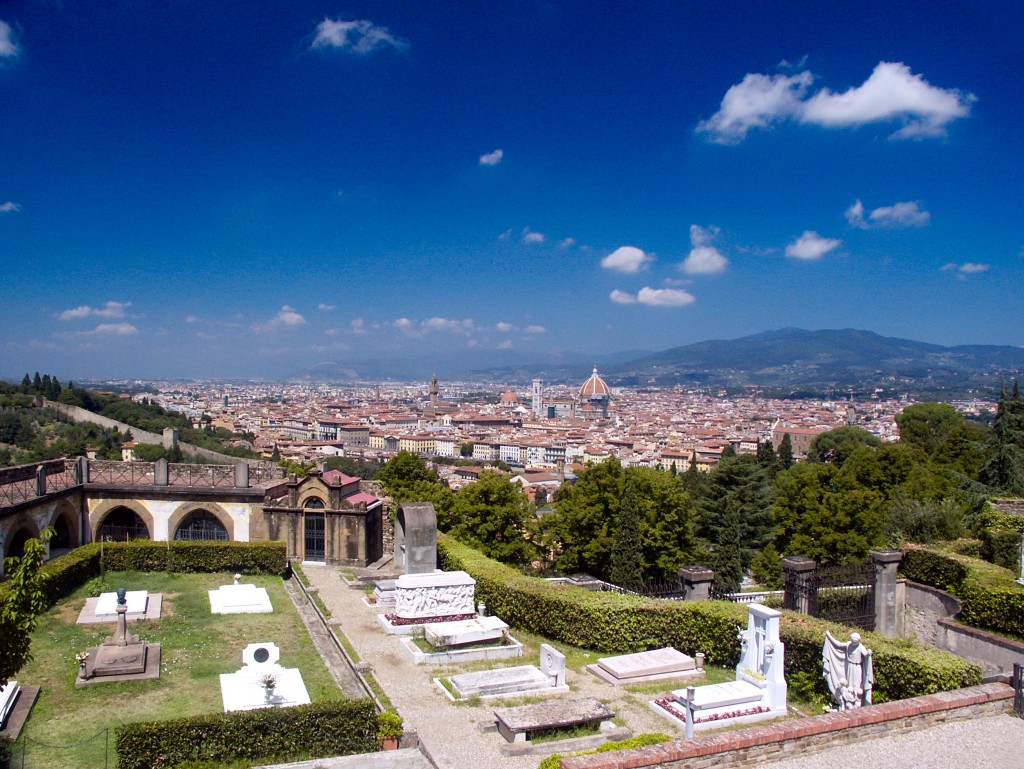
Porte Sante cemetery, burial place of notable figures of Florentine history. - 1348 The Black Death decimates Florence’s population.
- 15th century. Under the de facto rule of the Medici family (1434–94), Florence reaches its peak of artistic splendor.
- 16th – 18th century. Returning to Florence from exile in 1512, the Medici rule as dukes from 1532 and as grand dukes of Tuscany from 1569. The last Medici grand duke dies in 1737.
- 1865 – 71 Florence replaced Turin as Italy’s capital and, in an effort to modernize the city, the old market in the Piazza del Mercato Vecchio and many medieval houses were pulled down and replaced by a more formal street plan with newer houses.
- 1943 – 1944 During World War II the city experienced a year-long German occupation. Hitler declared it an open city on July 3 1944 as troops of the British 8th Army closed in. German forces retreating from Florence blow up its Arno bridges, except the Ponte Vecchio.
-
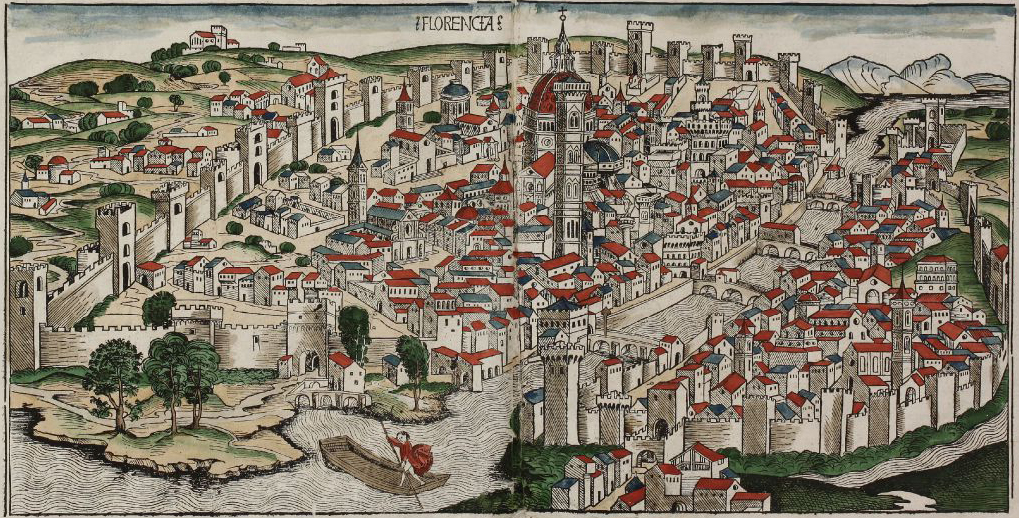
View of Florence by Hartmann Schedel, published in 1493. 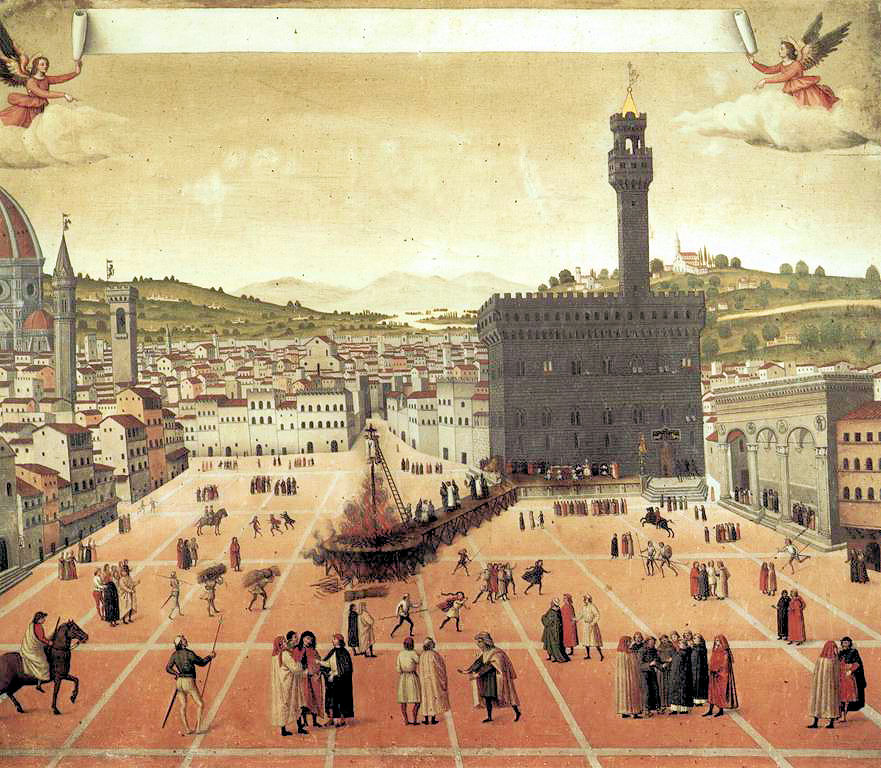
Girolamo Savonarola being burnt at the stake in 1498. - 1966 The Arno flooded parts of the center, damaging many art treasures. Around the city there are tiny placards on the walls noting where the flood waters reached at their highest point.
- 1980s Florence’s historic center is named a UNESCO World Heritage site in 1982 and is closed to most car traffic in 1988. Florence’s spiritual heart, the Cathedral of Santa Maria del Fiore (a.k.a. ii Duomo) glows in the late afternoon sun in this panoramic view from the hilltop Piazzale Michelangelo on the Arno’s south bank.
- 2016 BBC reported that a sinkhole, thought to have been caused by the bursting of a water pipe, opened up a 200-metre (660 ft) hole on the Arno river bank in Florence.

